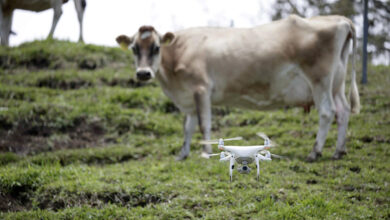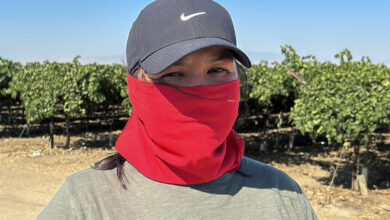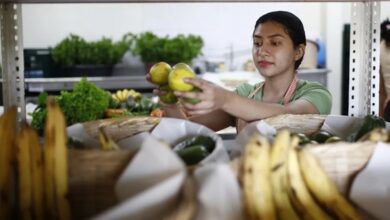What can be Learned from the Conservation of Badlands?
The knowledge accumulated over the years on badlands conservation has been vital for the survival of these unique spaces in terms of biodiversity and the generation of water resources.

Photo: Pixabay
LatinAmerican Post | Julián Andrés Pastrana Cuéllar
Listen to this article
Leer en español: ¿Qué se puede aprender de la conservación de los páramos?
Colombia is estimated to be home to 50% of the badlands worldwide, which cover almost three million hectares, a figure barely equivalent to 2.5% of the continental territory of this South American nation. Despite covering such a small proportion of the country, agencies such as the United Nations Development Program (UNDP) highlight that these ecosystems are authentic "water factories" key to supplying a figure close to 85% of the vital liquid that is used for human consumption, agricultural activities, and power generation.
According to a report by the Humboldt Institute entitled "Páramos Colombia: biodiversity and Management," these ecosystems have been affected by phenomena such as armed conflict, mining exploitation, the expansion of the agricultural frontier, the introduction of exotic species, and the changing climate. From this document, it is possible to extract various lessons regarding proposals to rescue these spaces from the threats that hang over them. Submissions have allowed that today, 51% of the badlands in Colombia are sheltered by some type of protection, and 86% maintain their natural coverage.
Protecting the badlands is essential for Colombia and the world, as they are vital to building resilience to climate change in carbon sequestration. Although this country has the most moors, they can also be found mainly in Ecuador, Venezuela, and Peru. They are treasures of the Andes' high mountains that house essential life resources.
Multiple Territorialities in the Badlands
In this regard, a great conclusion drawn from this Humboldt report includes identifying the Colombian badlands of different territorialities represented by various actors (the State, peasants, indigenous communities, etc.) often in conflict. Not in vain, according to the Latin American Faculty of Social Sciences (FLACSO), 70% of Colombia's inhabitants live in this nation's Andean zone. Among them, a significant proportion lives in the badlands, which to a certain extent has transformed part of these spaces, previously covered by fragile ones, pajonales, and wetlands, into plots or pasture crops.
From there, the initiatives aimed at conserving the badlands must include and allow the historically settled communities to participate. In this way, it is possible to reach a consensus that leads these groups to help protect ecosystems while ensuring their subsistence and quality of life through activities with low environmental impact.
In this sense, it is possible to identify activities carried out by these communities that could contribute to the preservation of these habitats, such as tourism, the production of essential oils, and handicrafts, the restoration of the high mountain vegetation, and the monitoring of the water and biodiversity.
Experiences collected by the FLACSO reports also enter the scene here, such as the Landscape Management Tools (HMP), which are actions carried out in the moors where there is human activity to preserve these spaces while improving production systems. And the living conditions of those who live there. Examples of HMP are planting trees on the banks of the streams to ensure water availability for human consumption, responsible crops, etc.; care of native vegetation in areas of a high slope; living fences around water reservoirs, among others.
Other Conservation Strategies
In the same way, the instruments emanating from the State and civil society that have allowed the conservation of the badlands are essential. Here, the almost two million hectares of these protected ecosystems stand out under the figure of protected areas of Sinap (National System of Protected Areas). In addition, other tools points in the same direction, such as complementary conservation strategies, which include indigenous reservations, black community territories, and peasant reserve areas.
Forest reserve areas (40% of the badlands are located within them), biosphere reserves, Ramsar wetland sites, and Important Bird Conservation Areas (AICA) are also part of these complementary strategies).
We recommend you read: Reforestation of forests in Latin American cities
Badlands for Life Project: A Strategy for the World
One ongoing project that exemplifies the practical application of moorland protection is Moors for Life, led by UNDP and the Humboldt Institute. It began to be executed last year and seeks to impact 16 of the most representative páramo complexes in the country.
Badlands for Life is based on implementing “conservation and restoration strategies” that explore the possibility of transforming or replacing agricultural and mining activities that affect these ecosystems with other more friendly to biodiversity. It also considers the importance of strengthening economic and financial mechanisms that promote the sustainable use of the badlands, managing socio-environmental conflicts in these ecosystems, and promoting joint work between local, regional, and national actors to preserve these reservoirs of water and Life.
In summary, Badlands for Life aims to provide tools to government entities, communities, and indigenous peoples so that they integrally manage the badlands while jointly monitoring the biodiversity and ecosystem services associated with these spaces. Likewise, the conservation and ecosystem connectivity in the badlands complexes included in the project are set as a goal. Finally, it seeks to promote activities coupled with these spaces' sustainable use.
This project plans to run until 2027 and is expected to benefit 1,091,398 hectares of protected areas within the badlands. It also seeks to restore 4,400 hectares of these ecosystems and conserve species that live there, such as the Andean condor, the spectacled bear, and the badlands tapir. Finally, it seeks to help 5,800 people, half men and the other half women.




